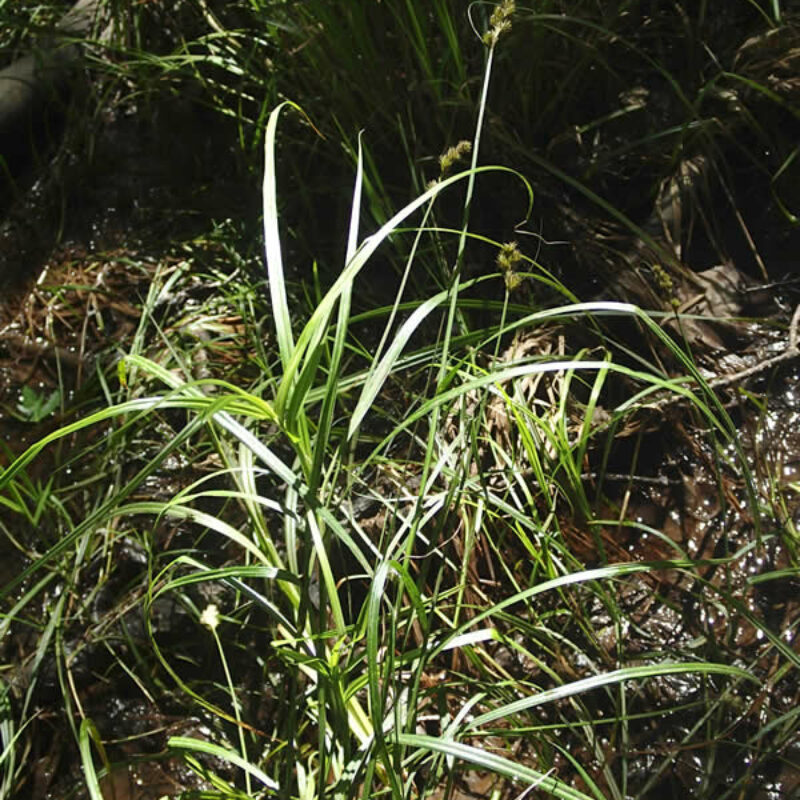Blunt Broom SedgeCarex tribuloides
Carex tribuloides prefers moist conditions that can be found in floodplain forests and wet meadows. Like other sedges, it is an important larvae host for many butterfly and moth species.
USDA symbol: CATR7
General Information
| Plant Type | Grass |
|---|---|
| Height | 3 feet |
| Light Exposure | Sun, Part Sun, Shade |
| Soil Moisture | Wet |
| Bloom Color | Green |

Tolerances
| Flooding / Inundation Tolerance | High |
|---|---|
| General Resilience | 6 |
| Salt Tolerance | None |
| Stress Tolerance | Fire Tolerant |
Pollinator Value: Low
| Bloom Months | May to June |
|---|---|
| Larval Host of | Butterflies |
| Specific Pollinators Hosted | Numerous butterfly species |
Project Planning
| Project Type | Erosion Control, Rain Garden, Restoration, Shoreline Buffer |
|---|---|
| Coefficient of Conservatism | 5 |
| Herbivore Sensitivity | Low |
| Lifespan | Perennial |
| Rate of Spread | Slow |
| Soil Stabilization | Shallow |
| Vegetative Reproduction | Clonal |
Range
| County | Aitkin, Anoka, Becker, Chisago, Cook, Douglas, Freeborn, Goodhue, Hennepin, Houston, Isanti, Itasca, Kanabec, Mille Lacs, Morrison, Pine, Polk, Ramsey, Rice, Sherburne, St. Louis, Wabasha, Washington, Winona, Wright |
|---|---|
| Ecoregion | Driftless Area, Lake Agassiz Plain, North Central Hardwood Forests, Northern Glaciated Plains, Northern Lakes and Forests, Northern Minnesota Wetlands, Western Cornbelt Plains |
| Approximate Eco Province | Eastern Broadleaf Forest, Laurentian Mixed Forest, Prairie Parkland, Tallgrass Aspen Parklands |
